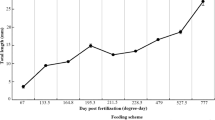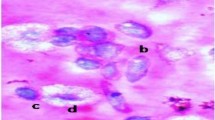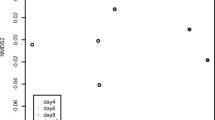Abstract
AT the beginning of the pupal stage of Sphinx ligustri, a lysis of larval tissues occurs. In winter, during diapause, the pupa is a bag full of blood containing a suspension of partially broken down larval tissues. In spring, diapause is broken, formation of adult tissues is speeded up and the moth becomes rapidly ready to emerge. Most of the amino-acids used for adult protein synthesis come from larval tissues; the question is whether the larval proteins are hydrolysed to free amino-acids before being used for adult protein synthesis, or whether adult proteins are built up from larger units that might be carried by phagocytes which are known to destroy the larval tissues. In order to approach an answer to this question, we decided to compare the mean specific rates of protein synthesis (rate of synthesis/amount of proteins) from one free amino-acid, namely glycine, in Sphinx ligustri pupæ, either in diapause or at the moment of the development of the adult organs.
This is a preview of subscription content, access via your institution
Access options
Subscribe to this journal
Receive 51 print issues and online access
$199.00 per year
only $3.90 per issue
Buy this article
- Purchase on Springer Link
- Instant access to full article PDF
Prices may be subject to local taxes which are calculated during checkout
Similar content being viewed by others
References
Moore, S., and Stein, W. H., J. Biol. Chem., 192, 663 (1951).
Author information
Authors and Affiliations
Rights and permissions
About this article
Cite this article
BRICTEUX-GRÉGOIRE, S., VERLY, W. & FLORKIN, M. Protein Synthesis in Sphinx ligustri Pupæ. Nature 179, 678–679 (1957). https://doi.org/10.1038/179678a0
Issue Date:
DOI: https://doi.org/10.1038/179678a0
Comments
By submitting a comment you agree to abide by our Terms and Community Guidelines. If you find something abusive or that does not comply with our terms or guidelines please flag it as inappropriate.



